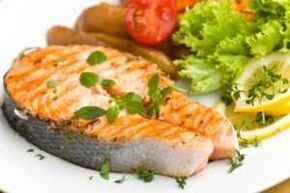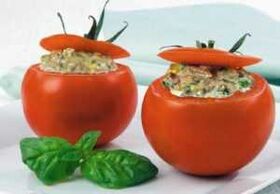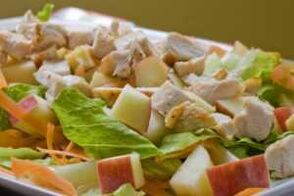
Actually, preparing meals for diabetics is not difficult, we are not talking about any special diet. In type 1 and type 2 diabetes, a balanced diet, suitable not only for the patient but also for the patient's health plays an important role.
Are not

The first fact is that diabetic nutrition involves limiting all direct sugars: diabetic treats (first, second and even dessert)no sugar or honey, excluding sweet foods - cakes, ice cream, desserts (apple pie, fruit pudding, pancakes, etc. ), cookies, sweets, cakes, chocolate, treatssugary drinks and juices, etc. v. , fatty and fried foods, fatty meats and sausages, beer, wine, white or black bread (usually, caramel is added) and any product made with white flour.
In addition, dry fruits, grapes, plums, and pears should be completely avoided. For alcoholic beverages, excluding beer, drink only dry wine, up to 200 ml per day, use only strong alcoholic beverages as a last resort and extremely pure. Remember to include alcohol in your daily calorie intake.
correct
Eat only whole grain bread. Meat can be cooked, but only lean!
Be careful with the side dishes, if you want to cook dumplings or dumplings, don't forget to monitor the portion size. Rice, pasta, potatoes are preferable.
For diabetes, recipes should include vegetables (also eaten raw) because they contain vitamins, minerals, protein, and almost no (or minimal) sugar. In vegetables, you need to limit carrots, peas and corn. Fruit can be consumed at most once a day, preferably as a morning snack.
Should divide food into 4-6 small meals during the day, snack in the evening. The secret of diabetes treatment and the amount of food should be chosen depending on the body weight in the normal range or need to be reduced, as well as the level of activity during the day.
For all diabetics, being active for at least 30 minutes a day is appropriate and recommended; Brisk walking, running, swimming, cycling, etc. v. works well.
You need to take at least 10, 000 steps per day.
It is quite understandable that sometimes the diet seems unbearable, and an irresistible urge to eat something "forbidden" will arise. Once a month, you can relax and pamper yourself with dark chocolate (chocolate suitable for cooking or one containing 60-70% cocoa).
If you decide to change your eating habits, you should first check with your doctor or specialist, such as a diabetologist, to make subsequent adjustments to your diabetes medication and insulin dosage if appropriate. give. Self-monitoring with a blood glucose meter is recommended.
Dietary and dietary measures are indispensable (neither treatment nor insulin, etc. ), and are the basis for successful treatment of all diabetics! These facts have been confirmed by a large number of specialized scientific studies in our country and around the world.
Diet for diabetes
Prohibited products:

- Fatty dairy products.
- Yolks and their products.
- Sausage.
- Fatty meats - goose, duck.
- Concentrated wine.
- Freedom road.
- Candy.
- Salty snacks - chips, nuts, snacks, etc. v.
Recommended products:
- Fats - butter, margarine, milk and dairy products - are all low in fat.
- Meat - young animals (veal, pork, lamb, chicken, rabbit, turkey).
- Fish - fresh water and sea.
- Venison.
- Ham - in small quantities.
- Vegetables - all types, including legumes.
- Fruit - in small quantities.
- Bread is whole wheat.
The technological methods that can be used are boiling, stewing, baking, rarely frying.
Here are some diabetes recipes, from soups and main courses to desserts, that are suitable for diabetes.
The amount of raw ingredients that the following diabetes recipes contain is designed for 4 servings.
Diet soup for diabetics
Soybean soup
Ingredient:
60 g soybeans, 20 g flour, 20 g butter, 20 g onion, garlic, parsley, salt.
Preparation:
Soybeans should be boiled or canned. Put the chopped onion in the butter, add the flour and add the hot water. Bring to a boil, add the boiled soybeans, minced garlic with salt and minced parsley. Cooked soups are best eaten while still hot.
Diet for main meals for people with diabetes
Fried halibut
Ingredient:
600 g halibut, 20 g butter, salt, bell pepper, 10 g flour, 1 lemon.
Preparation:
In flour mixed with salt and ground pepper, wrap fish pieces, oil and bake. Season the finished dish with lemon juice and garnish with lemon.
goulash
Ingredient:
320 g meat (beef, veal, pork, rabbit, but best of all - all kinds), 200 g tomatoes, 40 g oil, 1 onion, 20 g potatoes, salt, parsley, oregano, dill.
Preparation:
Quickly fry the peeled meat cubes in oil and rinse in hot water. Add salt, chopped tomatoes, peeled onion and simmer. When the meat is almost tender, add in the peeled, grated potatoes, dill and marjoram. Remove the onions from the finished broth (if boiling, discard) and add the finely chopped parsley.
Diet vegetables for diabetics
Stuffed tomatoes

Ingredient:
4 large tomatoes, 120 g poultry, 20 g rice, 20 g butter, 1 egg, salt.
Preparation:
Cut off the tops of the washed tomatoes and discard the middle. Wash the washed rice in salted water, mix with minced poultry meat, salt, add beaten egg and mix well.
Fill the prepared tomatoes with the resulting mixture without the middle, cover the cut tops and place in a container with light oil. Add hot water and simmer, cover.
Boil the removed core, grind and add the finished dish.
Vegetable risotto
Ingredient:
160 g rice, 20 g carrots, 20 g cauliflower, 15 g celery, 15 g parsley, 10 g corn, oil, parsley, salt, 120 g hard cheese.
Preparation:
Cut all peeled vegetables into cubes or grate on a coarse blender. Cut off the base of the cauliflower and divide the head into small flower clusters. Wash the corn. Wash rice, add oil, water, salt and simmer. After a while, add the prepared vegetables and simmer until tender. Serve the finished risotto, sprinkled with chopped parsley and grated cheese.
Cold meal diet for diabetics
Vegetable cheese

Ingredient:
200 g cottage cheese, 40 g milk, 1 tomato, 20 g leeks, 40 g cucumbers, salt, dill.
Preparation:
Peel the tomatoes, remove the seeds from the pulp, peel the leeks and cut them into thin strips, grate the cucumbers on a coarse blender.
Whip the salted cheese with a whisk with the milk.
Add all the prepared vegetables to the resulting curd mass, and grind dill to taste.
Snack curd
Ingredient:
200 g cottage cheese, 2 cloves of garlic, sesame seeds, salt, green onions, dill, parsley.
Preparation:
Crush garlic with salt and mix with cheese. Dilute with water if necessary to form a thick mass. Chop the green onions into small pieces and stir fry the sesame seeds. Form a roll with the cooked garlic curd, wrap in the scallions and sesame seeds mixture so that its surface is covered. Cool the finished ham until firm.
Diet salad for diabetics
Apple and chicken salad

80 g carrots, 60 g bean sprouts, 200 g sour apples, 100 g cooked chicken breast, salt, 10 g butter, lemon juice.
Preparation:
Grate the peeled carrots on a coarse grinder, wash the apples, remove the cores, cut into thin slices, just like ready-made chicken.
Mix all the prepared ingredients together, add bean sprouts, salt, essential oils and lemon juice. Stir again and let cool.
Five myths about diabetes
Diabetes is a chronic, lifelong disease with many complications. Those to whom it was born must learn to live with it and adapt their rhythm and way of life to it. Despite the fact that this topic is widely discussed in society, there are still a lot of myths surrounding this disease. Let's look at the main ones. Therefore…
Myth: diabetes is a disease of obese people.
People rarely realize the difference between type 1 and type 2 diabetes. Type 1 diabetes can develop in childhood. The disease is genetically determined, requiring insulin therapy. In contrast, type 2 diabetes is often accompanied by being overweight as noted above. The disease is characterized by a slow onset.
Myth: Diabetes is an "old age" disease.
As more children and young adults are obese today, type 2 diabetes is increasingly affecting younger age groups.
Myth: Diabetics should never eat sweets and must follow a strict diet.

Of course, diet is important, but it's not the complete elimination of carbohydrates. Diabetics cannot eat simple sugars (glucose), beet sugar (sucrose) and honey. However, they may use artificial sweeteners. Diabetics should eat complex carbohydrates (starches).
With diabetes, sweets are replaced only with sweets - sweeteners, fruits. For example, you can eat two or three peaches, two oranges, or three apples. Or you can eat something made with a sweetener.
Nutritionists recommend preparing sweets at home, this ensures that the dishes are free of harmful preservatives and additives. From available and authorized products, you can prepare any delicious dish, treat yourself and your loved ones to a delicious dessert.
Myth: Diabetics can eat well, they just need to eliminate sugar.
As mentioned, diabetes management involves regulating carbohydrate intake. Complex carbohydrates should be included in the diet every day in equal amounts, determined by your doctor. The prescribed amount must be distributed throughout the day, as diabetics must eat frequently. The principles of the diabetic diet are consistent with the principles of balanced nutrition, so it is not only the adjustment of the sugar content, but the entire composition of the diet. The essence of the disease lies not only in metabolic disorders in the level of carbohydrates, but also in protein and fat.
Myth: Diabetics can eat as much fruit as they want.
Fruit contains a certain amount of carbohydrates. Obviously, it is their content that a diabetic should include in his daily diet. So you cannot eat the fruit in any quantity. Priority should be given to choosing those that contain the minimum amount of carbohydrates and are rich in fiber, which is important for the digestive process.














































































